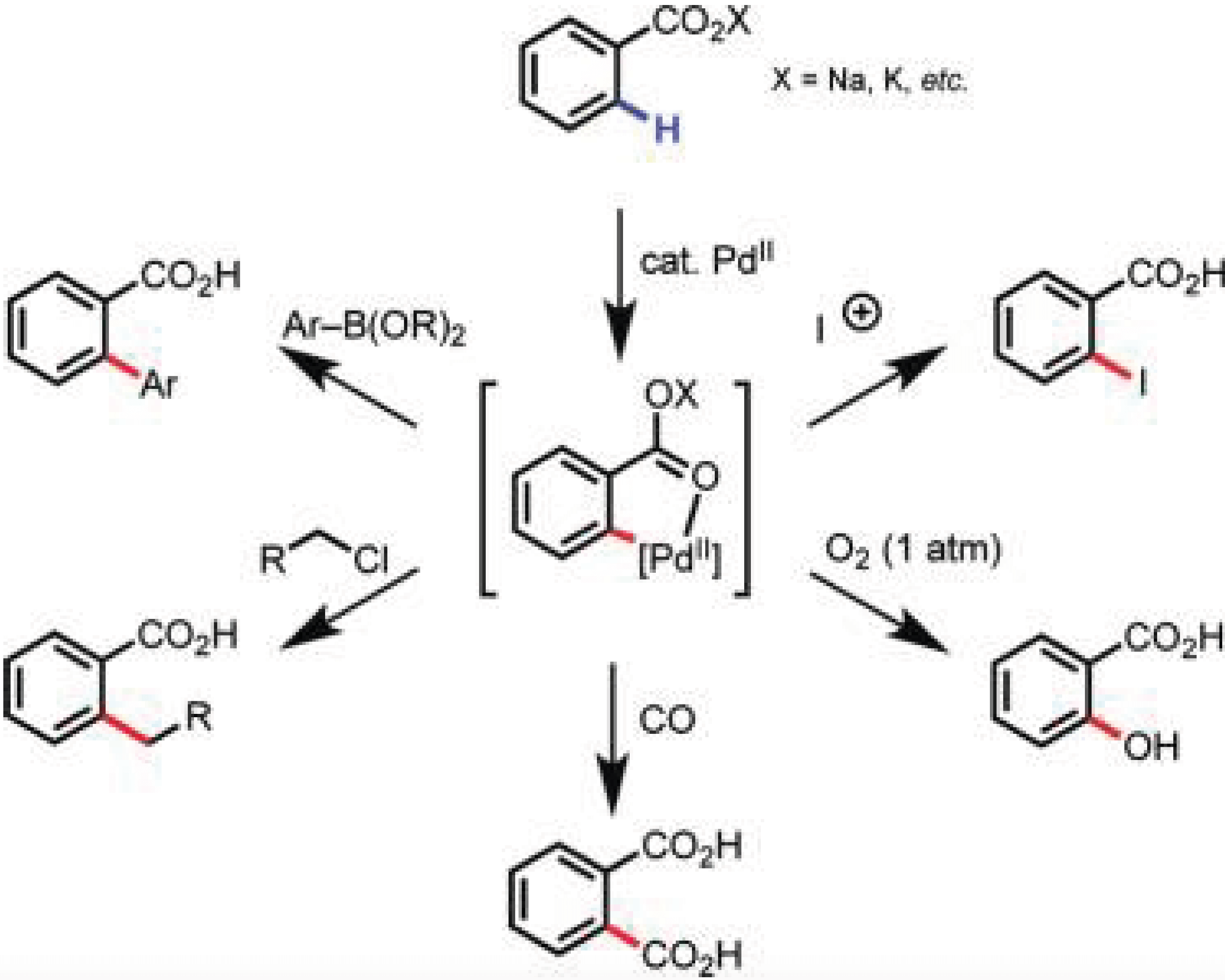Weak Coordination as a Powerful Means for Developing Broadly Useful C-H Functionalization Reaction
Engle, K. M., Mei, T.-S., Wasa, M., Yu, J.-Q.
Acc. Chem. Res.,
2012, 788-802; 10.1021/ar200185g

01/2012
Research in the area of homogeneous transition metal–catalyzed C–H functionalization can be broadly grouped into two subfields. They reflect different approaches and goals and thus have different challenges and opportunities. One approach involves reactions of completely unfunctionalized aromatic and aliphatic hydrocarbons, which we refer to as “first functionalization”.
The second subfield of C–H functionalization involves substrates containing one or more pre-existing functional groups, termed “further functionalization”. One advantage of this approach is that the existing functional group (or groups) can be used to chelate the metal catalyst and position it for selective C–H cleavage. Precoordination can overcome the paraffin nature of C–H bonds by increasing the effective concentration of the substrate so that it need not be used as solvent.
In this Account, we focus on an emergent theme within the further functionalization literature: the use of commonly occurring functional groups to direct C–H cleavage through weak coordination. We discuss our motivation for studying Pd-catalyzed C–H functionalization assisted by weakly coordinating functional groups and chronicle our endeavors to bring reactions of this type to fruition.